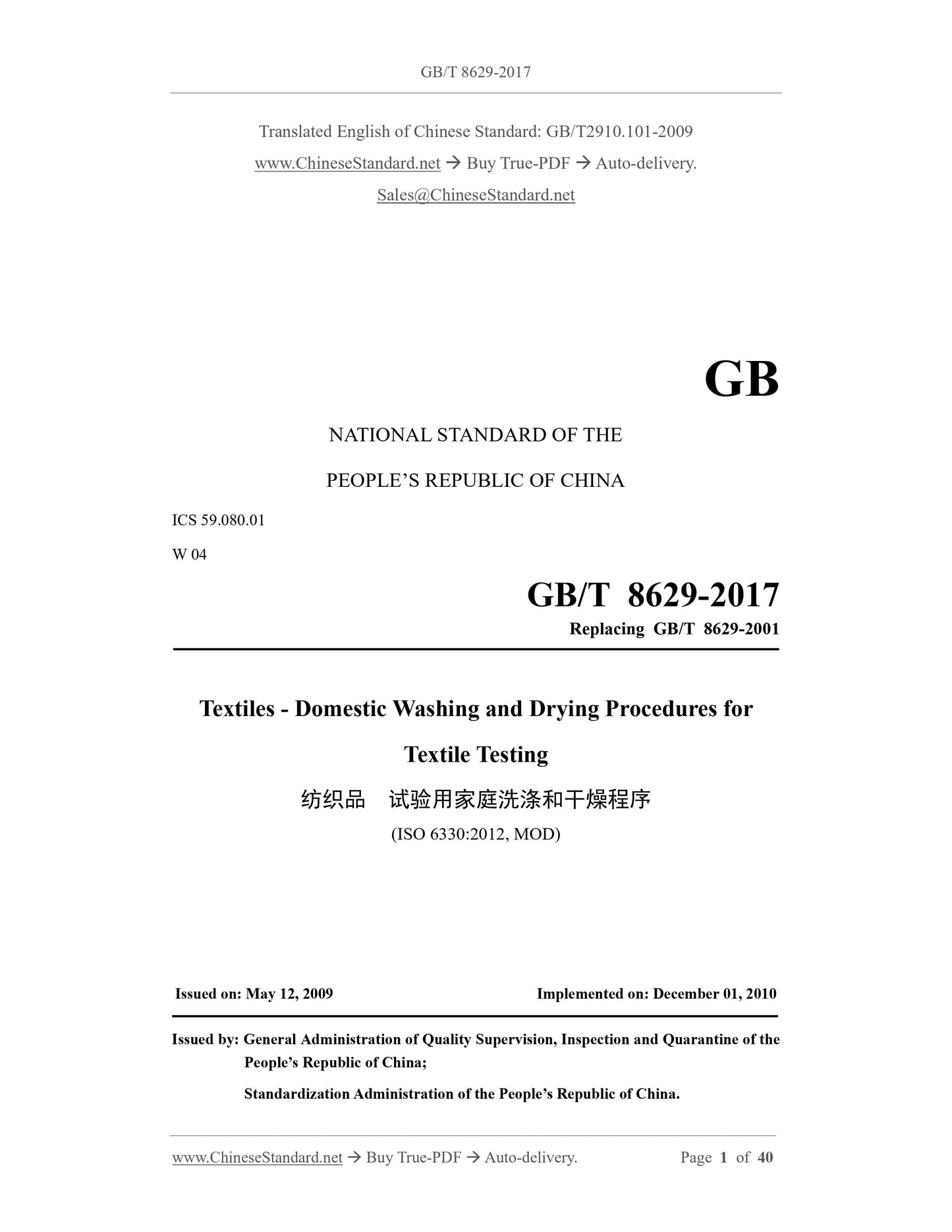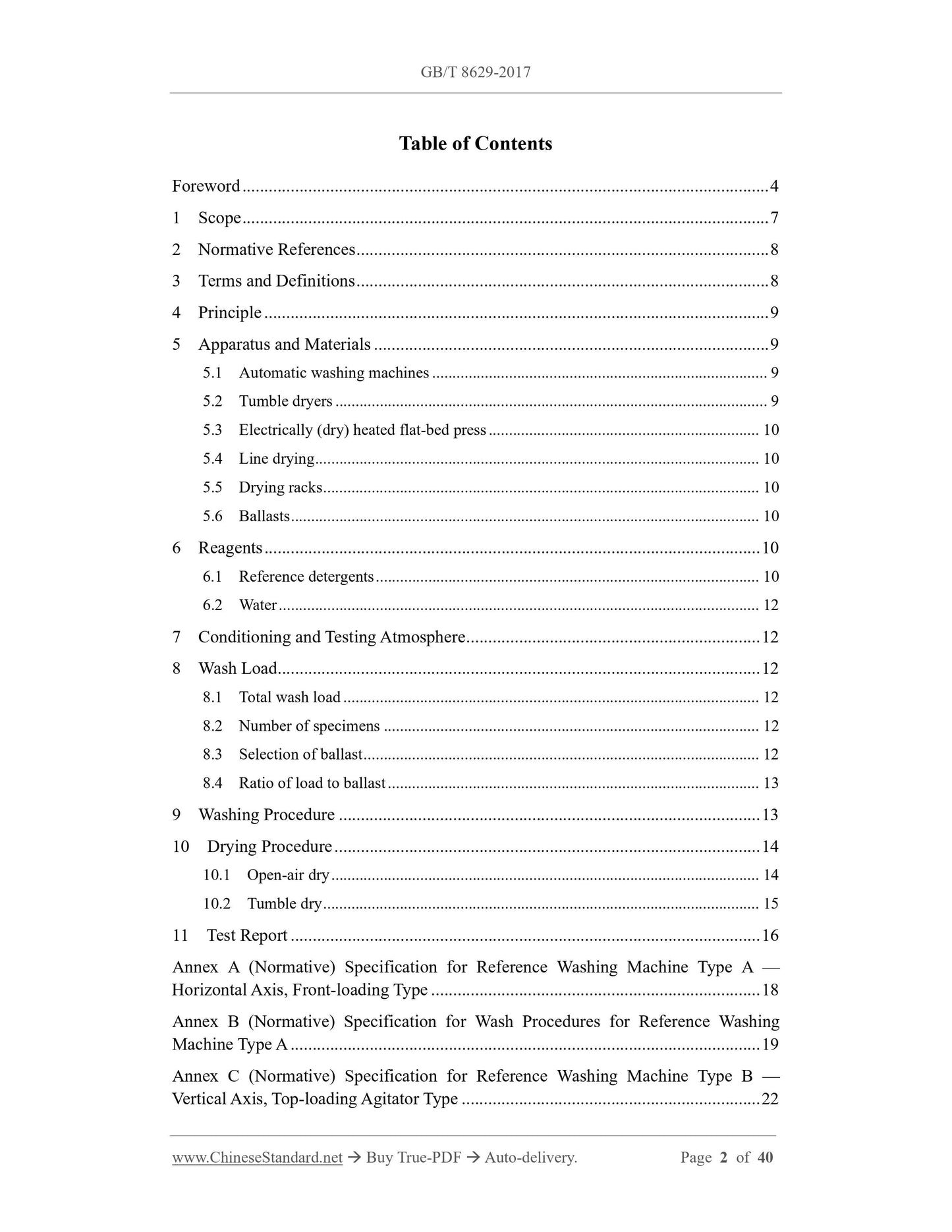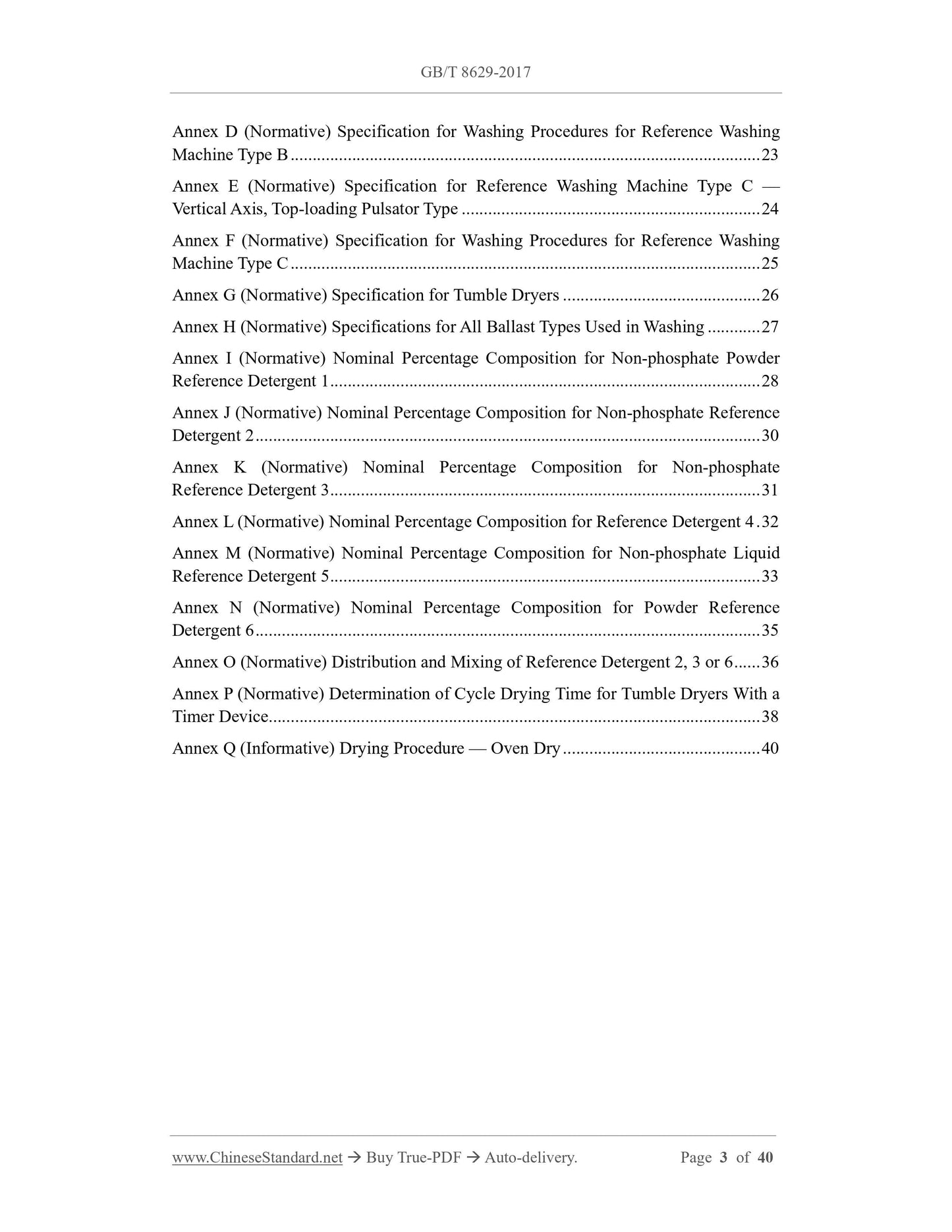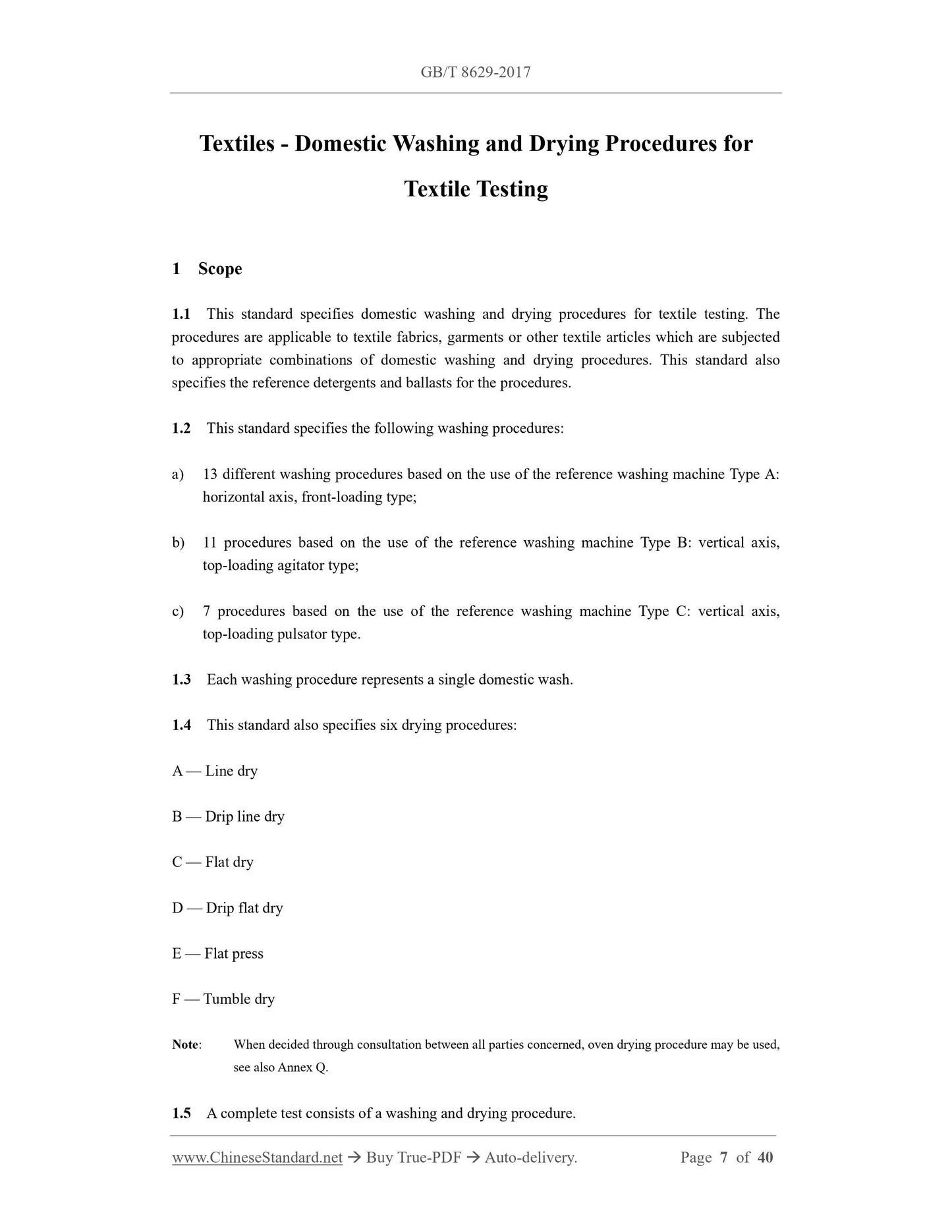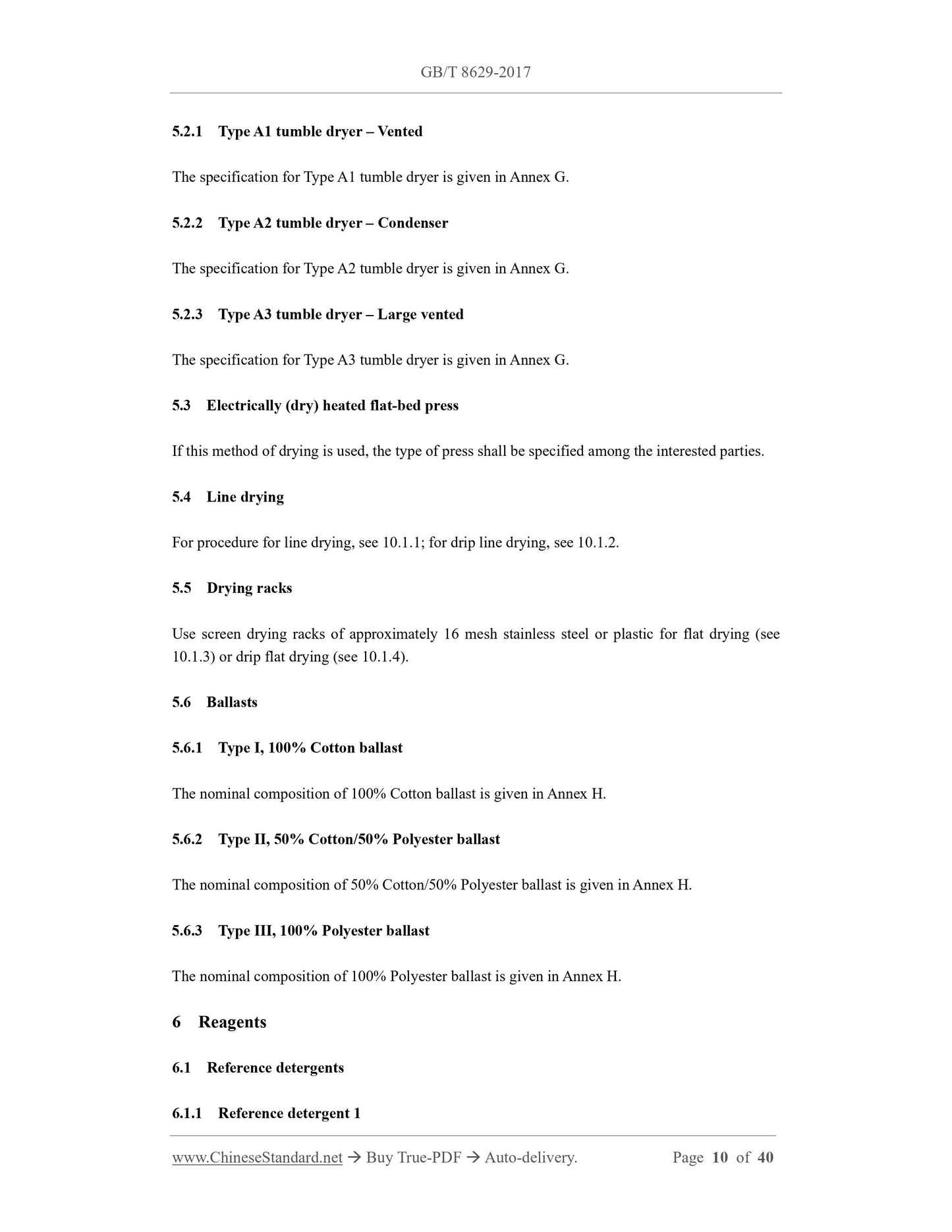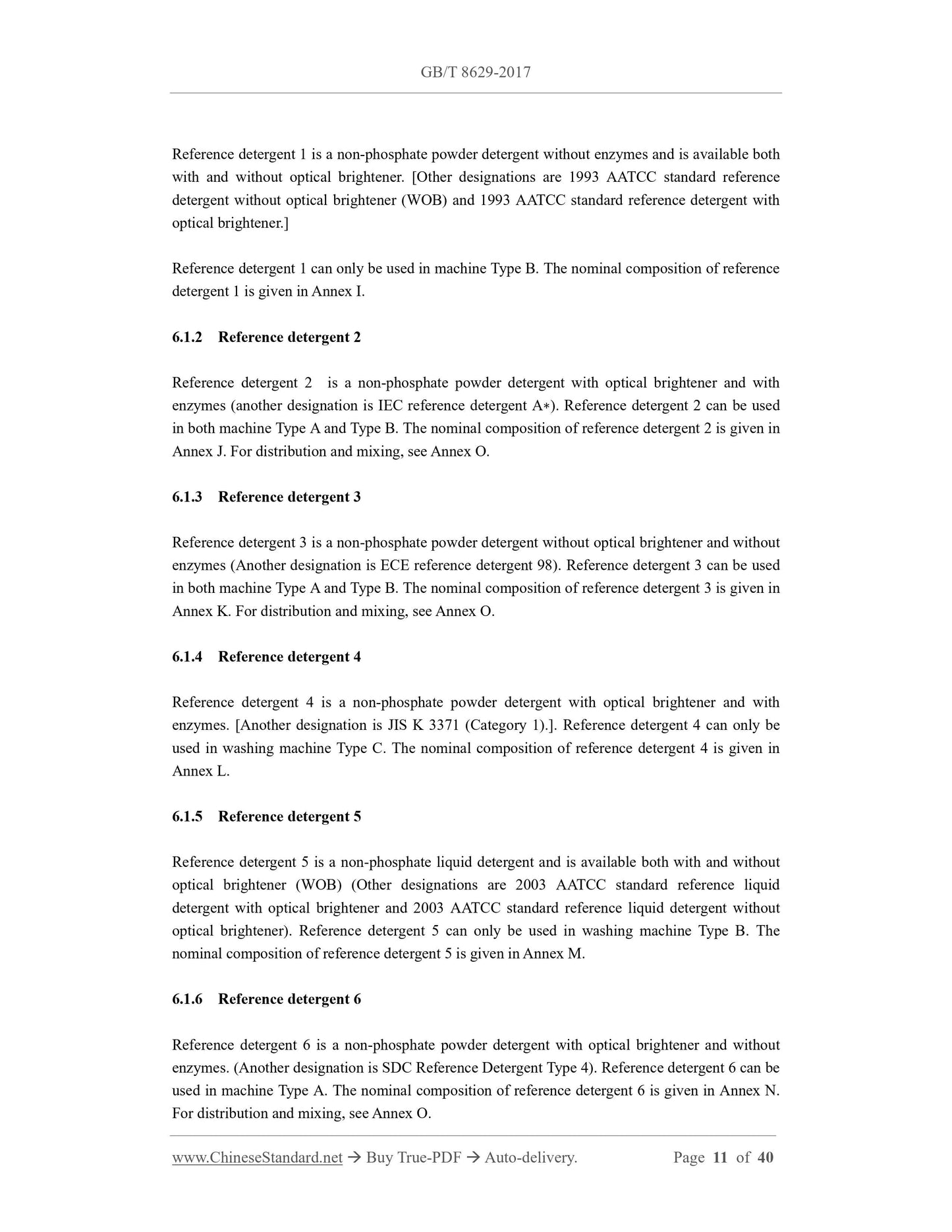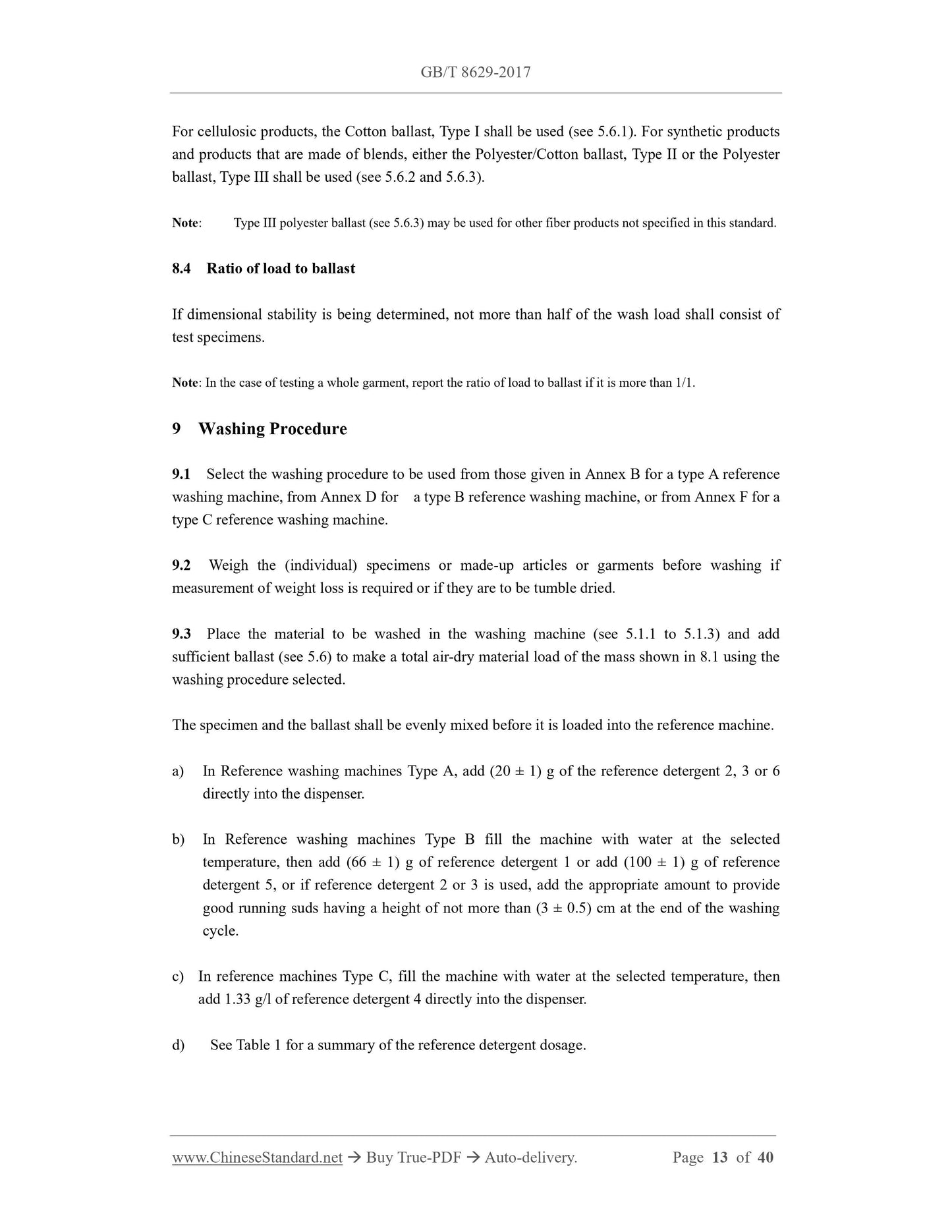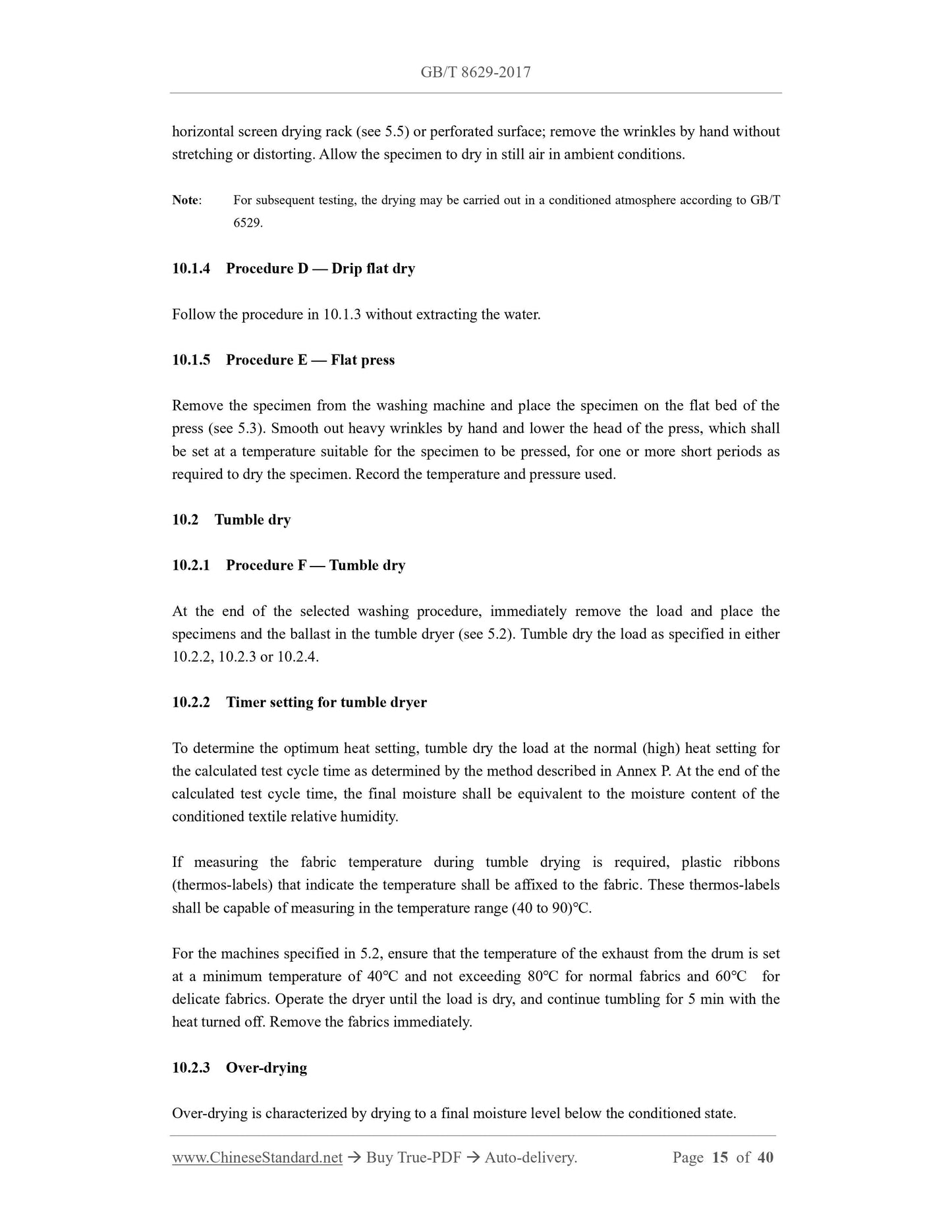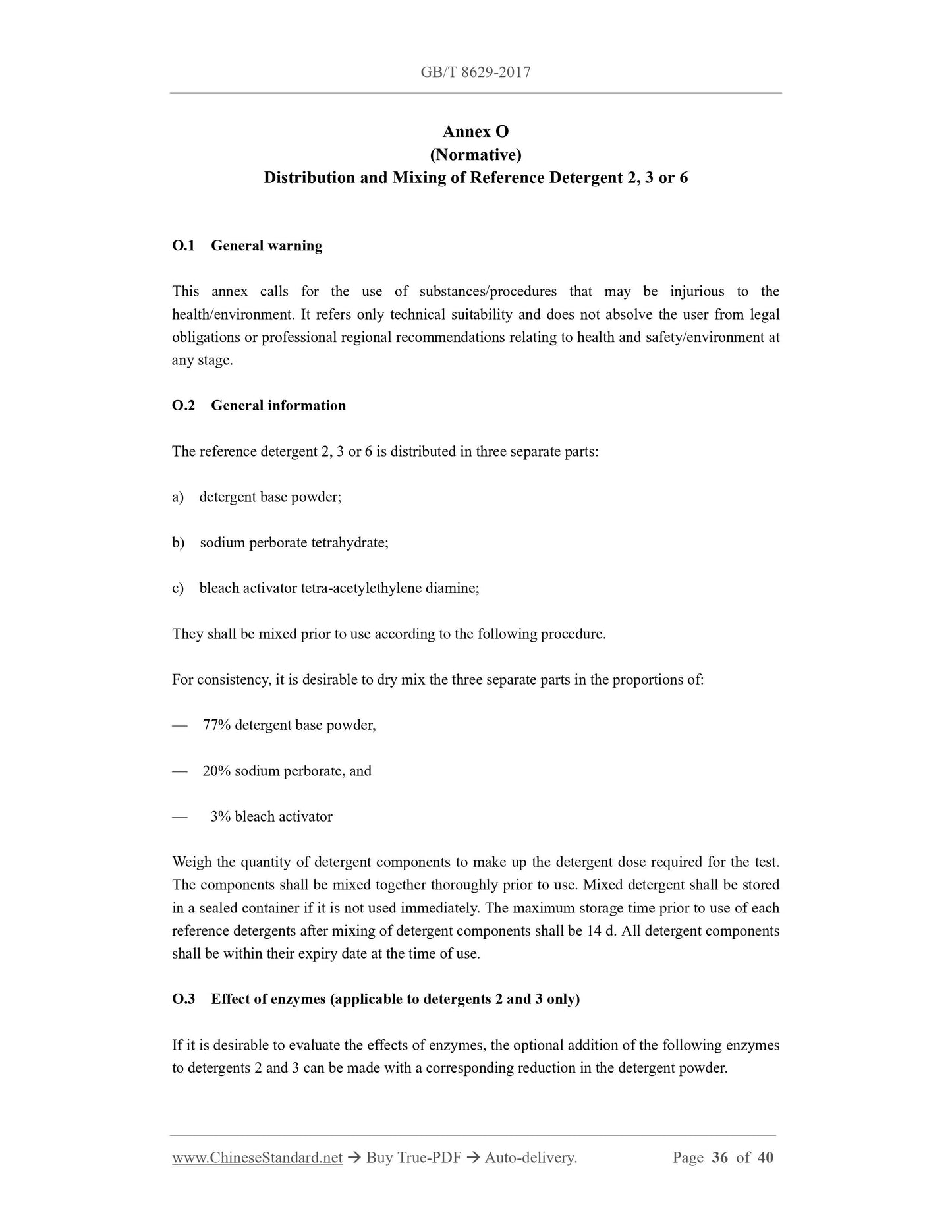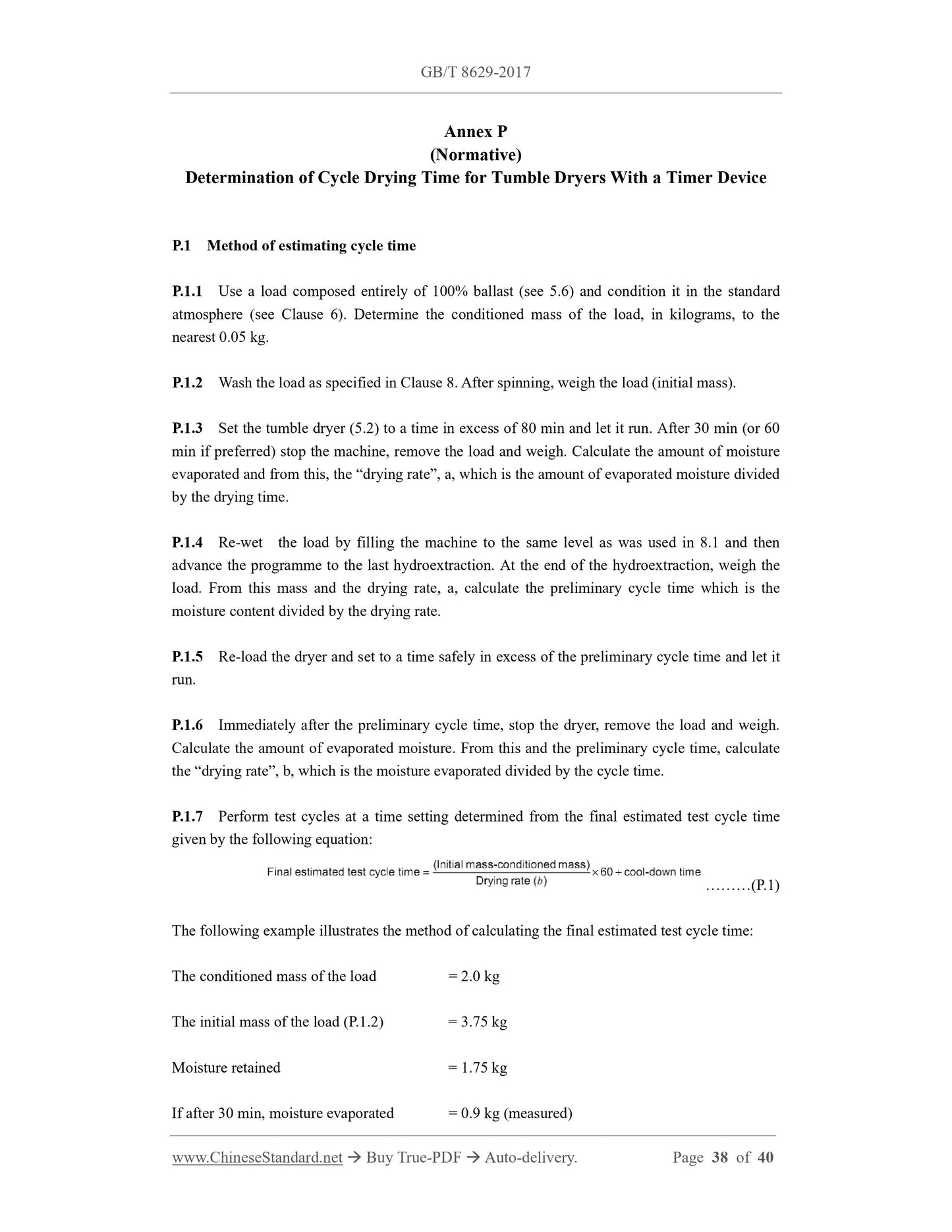1
/
of
10
www.ChineseStandard.us -- Field Test Asia Pte. Ltd.
GB/T 8629-2017 English PDF (GB/T8629-2017)
GB/T 8629-2017 English PDF (GB/T8629-2017)
Regular price
$255.00
Regular price
Sale price
$255.00
Unit price
/
per
Shipping calculated at checkout.
Couldn't load pickup availability
GB/T 8629-2017: Textiles -- Domestic washing and drying procedures for textile testing
Delivery: 9 seconds. Download (and Email) true-PDF + Invoice.Get Quotation: Click GB/T 8629-2017 (Self-service in 1-minute)
Newer / historical versions: GB/T 8629-2017
Preview True-PDF
Scope
Use of different parameters (washing machine type, detergent type and type of tumble drier) may affecttest results for any test using this standard. Therefore, parties using this standard are strongly
encouraged to agree on the parameters to be used.
Basic Data
| Standard ID | GB/T 8629-2017 (GB/T8629-2017) |
| Description (Translated English) | Textiles -- Domestic washing and drying procedures for textile testing |
| Sector / Industry | National Standard (Recommended) |
| Classification of Chinese Standard | W04 |
| Classification of International Standard | 59.080.01 |
| Word Count Estimation | 31,338 |
| Date of Issue | 2017-05-12 |
| Date of Implementation | 2017-12-01 |
| Older Standard (superseded by this standard) | GB/T 8629-2001 |
| Quoted Standard | GB/T 6529; GB/T 7477 |
| Adopted Standard | ISO 6330-2012, MOD |
| Issuing agency(ies) | General Administration of Quality Supervision, Inspection and Quarantine of the People's Republic of China, Standardization Administration of the People's Republic of China |
| Summary | This standard specifies the home washing and drying procedures for textile testing and specifies the standard detergents and buffers used in the procedure. This standard applies to home washing and drying of textile fabrics, garments or other textile products. This procedure specifies the following washing procedures: a) 13 kinds of washing procedures using horizontal drums, front door feeding type standard washing machines (type A washing machines); b) 11 kinds of washing procedures using vertical stirring, top feeding type standard washing machine (type B washing machine) Procedures; c) seven kinds of washing procedures using vertical pulsator, top feeding type standard washing machine (type C washing machine). Each washing procedure represents an independent household wash. This standard provides six kinds of drying procedures: A - hanging dry; B - hanging drip; C - flat to dry; D - flat drip dry; E - flat |
Share
